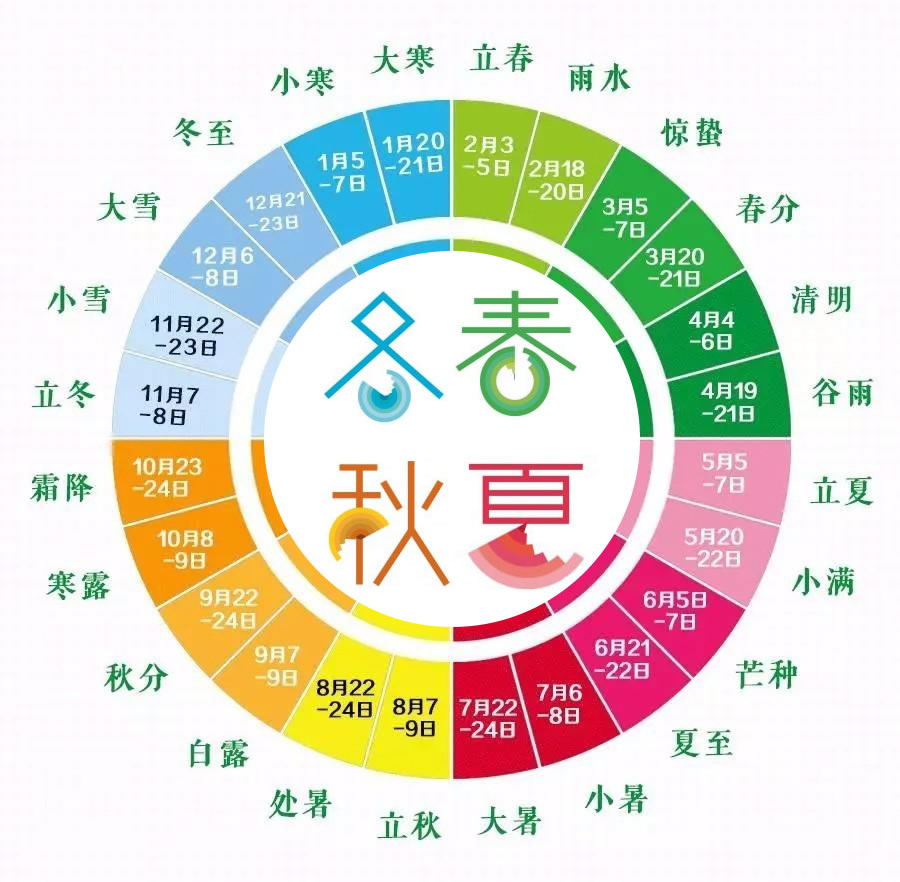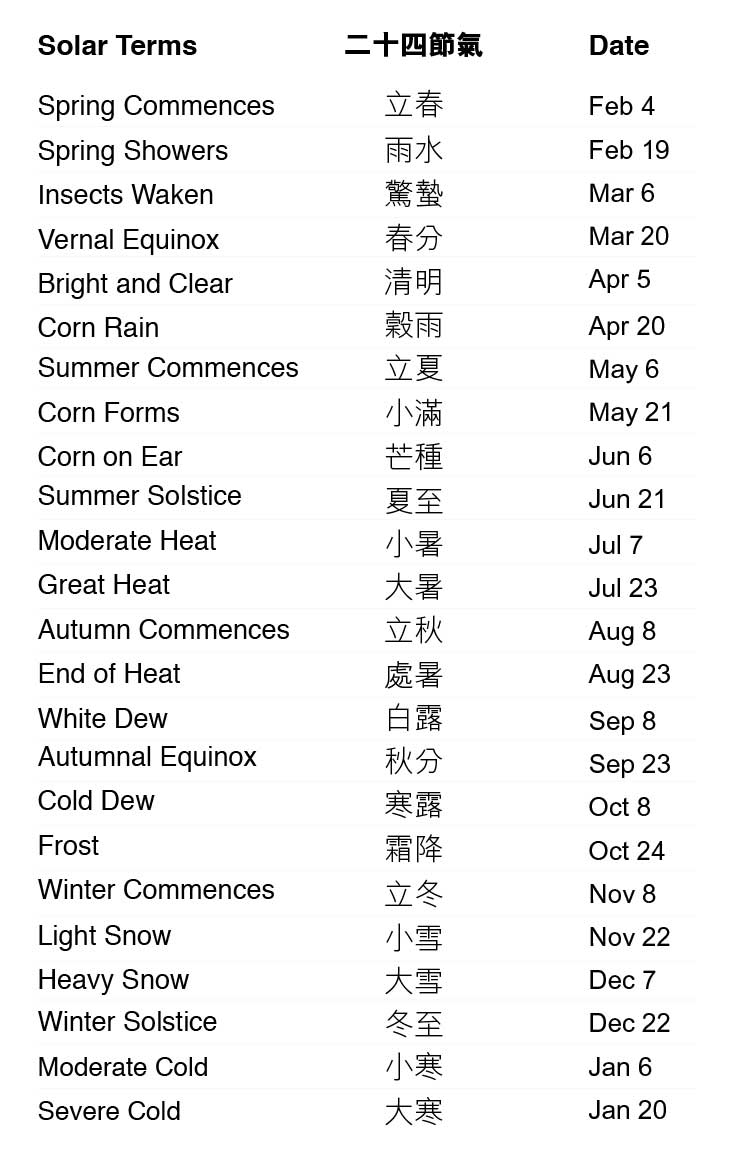How to understand Chinese 24 solar terms?

Origin and purpose of 24 solar terms
Two spellings for the 24 solar terms
There are two spellings for the 24 solar terms, one is a traditional Chinese 二十四節氣, another spelling is the simplified Chinese二十四节气. The twenty-four solar terms have a history of over 2000 years. It was adopted in ancient times to serve as a supplementary calendar for guiding agricultural affairs. Owing to the extremely large territory of China, the formulation of the twenty-four solar terms mainly took account of the climatic conditions of the yellow river valley. Therefore, the twenty-four solar terms could be used only as a reference for farming of different regions.

How 24 solar terms work?
The twenty-four solar terms are evenly arranged
The twenty-four solar terms are evenly arranged into the 12 months of a year, with each term (a climatic period) lasting 15 days or half a month. The beginning of spring, the beginning of summer, the beginning of autumn and the beginning of winter usher in the four seasons.
The spring equinox, the autumn equinox, the summer solstice and the winter solstice harbinger the turning-points for the changes of the distance of the earth from the sun.
Lesser heat, greater heat, the end of heat, lesser cold and greater cold pinpoint the undulation of temperature. Rain water, grain rain, lesser snow and greater snow reveal the phenomena of rainfall and snowfall. White dew, cold dew and frost’s descent vividly depict the changes of moisture or water vapor in the atmosphere. Lesser fullness of grain and grain in beard demonstrate the growing condition of the crops. The walking of insects triggers thunders from the sky and awaken dormant insects under the ground. At the approach of pure brightness, the weather turns clear and fresh.
Influence of 24 solar terms
Solar terms originated in China
Solar terms originated in China, then spread to Korea, Vietnam, and Japan, countries in the East Asian cultural sphere. Although each term was named based on the seasonal changes of climate in North China Plain, peoples living in the different climates still use it with no changes.
Since ancient times, Chinese people have established, through the twenty-four solar terms, a close relationship with nature. Some solar terms such as the pure brightness and winter solstice, due to their distinctive significance, have become traditional festivals since ancient times. In 2016, the Solar Terms were listed as UNESCO’s Intangible Cultural Heritage.
The “Song of Solar Terms”
The “Song of Solar Terms” (节气歌)
The “Song of Solar Terms” (节气歌)is used to ease the memorization of jiéqì: Simplified Chinese and Pinyin
春雨惊春清谷天 chūn yǔ jīng chūn qīng gǔ tiān,
夏满芒夏暑相连 xià mǎn máng xià shǔ xiāng lián,
秋处露秋寒霜降qiū chù lù qiū hán shuāng jiàng,
冬雪雪冬小大寒 dōng xuě xuě dōng xiǎo dà hán.
每月两节不变更 měi yuè liǎng jié bù biàn gēng,
最多相差一两天 zùi duō xiāng chā yī liǎng tiān
上半年来六、廿一 shàng bàn nián lái liù, niàn yī
下半年是八、廿三 xià bàn nián shì bā, niàn sān
